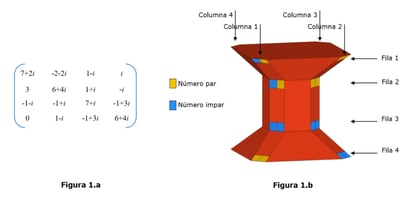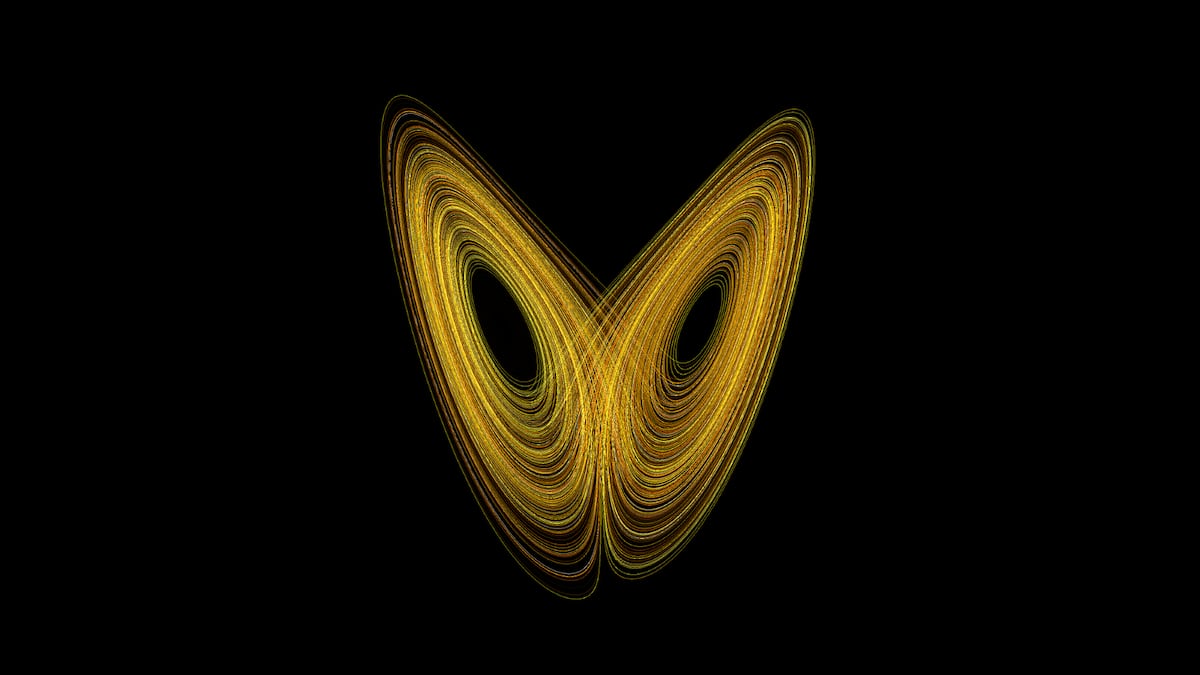The famous Rubik’s cube game consists of achieving, through certain movements, that each of the faces of the cube has a single color. In the quantum universe we find a similar game: the one with the quantum hypercube. This object comes from a model of quantum computing and the challenge is to reduce the level of the hypercube through a series of movements. The lessons learned from this game have allowed us to demonstrate interesting properties of quantum computing models and also of number theory.
In quantum computing, the elementary unit of information is the qubit. Like a bit, in classical computing, a qubit can be in two states, which we denote by |0〉 and |1〉, but it can also be in intermediate states, for example, the state 0.8|0〉 + 0 .6|1〉. Mathematically, any qubit can be expressed with two coordinates, in the example above, (0.8, 0.6). If we have a system of two qubits, the state of each one of them is expressed with four coordinates. The values of each of these coordinates are complex numbers; that is, numbers of the form a + bi, where a and b are real numbers and i is the complex unit, defined as the square root of -1.
It is possible to consider simpler computational models, in which the coordinates of the quantum states cannot be any complex number, but only those of the form a + bi, with a and b integers, except for a factor that depends on a natural number k . These coordinates correspond to the so-called discrete states, since they can only take discrete values, the integers, of level k. If we have a system of two qubits in discrete state, each one will be written (a+ib, c+id, e+if, g+ih), with a, b, c, d, e, f and g integers. And its level is k if the coordinates satisfy the equation a2 + b2 + c2 + d2 + e2 + f2 + g2 + h2 = 2^k.

We can arrange the coordinates of four discrete states of two qubits on a grid, one matrix, as in Figure 1.a (image above). When these states have the same level k and satisfy a certain property (they are orthogonal to each other), the matrix is a quantum gate; that is, a basic quantum circuit over a small number of discrete qubits of level k. In Figure 1.a, each row and column of the matrix corresponds to the coordinates of a discrete 2-qubit of level 6, and therefore the matrix is a discrete quantum gate of that level.
In general, the quantum hypercube represents a discrete quantum gate of a given level k. In Quantum Rubik’s game, the objective is to lower the level of the hypercube to the zero level, which corresponds to the matrix formed by zeros, except in the elements of the main diagonal, which have ones. For this, the allowed movements are: permute rows or columns of the matrix, exchange the real and imaginary parts of a row or column, rotate two rows or columns and reduce the level.
To execute them, instead of rotating the cube as in Rubik’s, the hypercube is operated with two specific quantum gates called H and G. In general, applying H to a qubit increases its level by one, but if when applied, the real and imaginary parts of the two coordinates have the same parities (that is, they are both even or they are both odd), the level is reduced by one. The gate G swaps the real and imaginary parts of certain coordinates, but leaves the level unchanged. Finally, the permutation and rotation of rows or columns are movements that result from specific combinations of gates G and H.
So, to lower the level of the hypercube, you have to make rows 1 and 2, on the one hand, and 3 and 4, on the other hand, have the same parity configuration and apply H. Therefore, the really important information is the parity of the coordinates. For this reason, in the hypercube these parities are represented by a two-color code, as shown in Figure 1.b. The reduction movement can also be carried out, in an analogous way, by columns.
But, beware! If you are not careful with the chosen movements, you can expand the level of the hypercube, instead of reducing it. If the hypercube does not have the indicated parity settings, applying H will increase the level. The same happens with the rotation of rows or columns: if the configuration is not appropriate, it increases the level of the hypercube, while if it is appropriate, it maintains the level. However, if we play following a proper strategy, we can always solve this game, just like the Rubik’s cube.
From this game we can deduce interesting facts about quantum computing. That it can always be solved is equivalent to the fact that any two-qubit discrete quantum gate can be constructed using exclusively the two elementary quantum gates H and G. The result is conjectured to be true for any number of qubits, although this has not yet been proved. Furthermore, this issue is related to other problems, with profound implications for number theorywhich are already being object of study.
Jesus Lacalle He is director of the Department of Mathematics Applied to ICT at the Higher Technical School of Computer Systems Engineering at the Polytechnic University of Madrid.
Agate Timón García-Longoria is coordinator of the Mathematical Culture Unit of the Institute of Mathematical Sciences (ICMAT).
You can follow MATTER in Facebook, Twitter and Instagramor sign up here to receive our weekly newsletter.
#Play #Quantum #Rubiks #Hypercube









